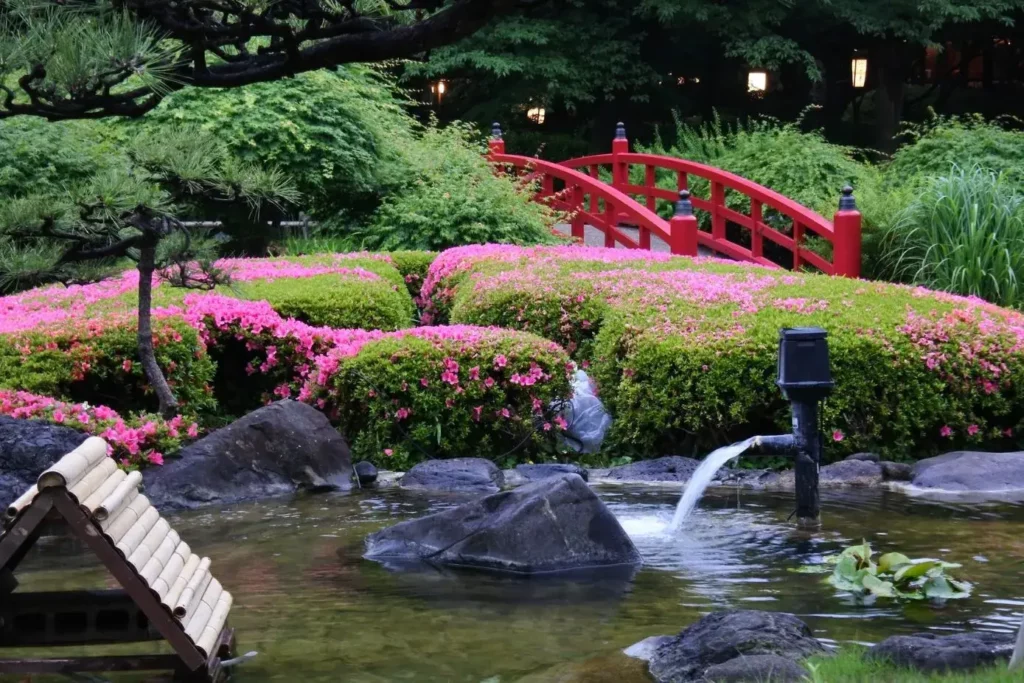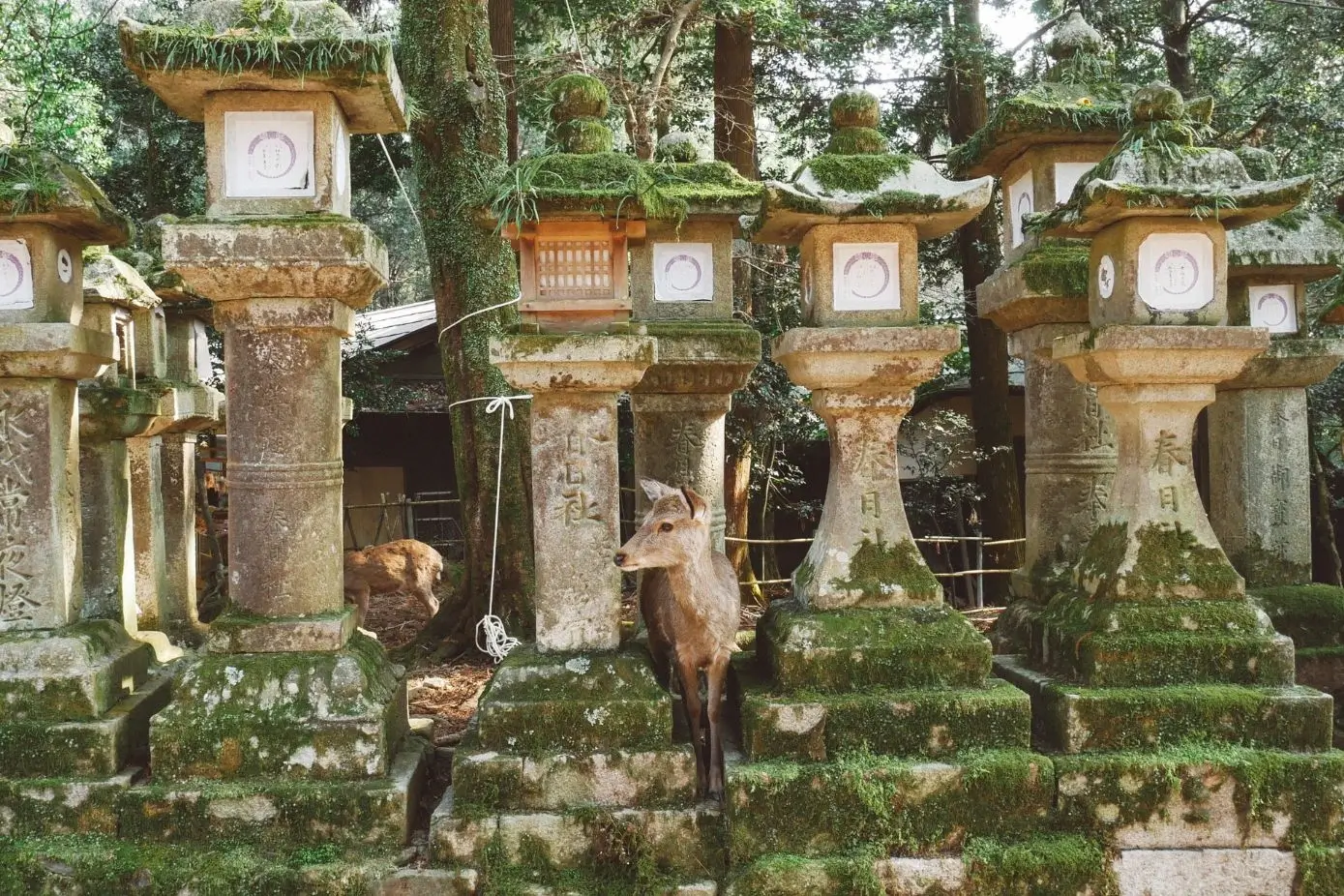Tokyo, a vibrant metropolis, masterfully weaves its bustling city life with pockets of serene natural beauty.
Amidst the towering skyscrapers and buzzing streets, gardens stand as testaments to Japan’s age-old reverence for nature.
These gardens not only offer a refreshing contrast to the urban sprawl but also celebrate the delicate balance between man-made and natural environments.
Steeped in cultural significance, gardens in Tokyo serve as peaceful retreats, inviting both locals and tourists to momentarily step away from the city’s hectic pace.
In this article, we’ll discover the 8 best Japanese gardens in Tokyo, each offering its unique allure and story. Join us on this journey, and let’s explore these verdant oases together.
Best Japanese Gardens in Tokyo
- Shinjuku Gyoen National Garden
- Rikugien Garden
- Hama-rikyu Gardens
- Koishikawa Korakuen Garden
- Ueno Park
- Kyū Shiba Rikyū Garden
- Nezu Museum Garden
- Imperial Palace East Gardens
Shinjuku Gyoen National Garden
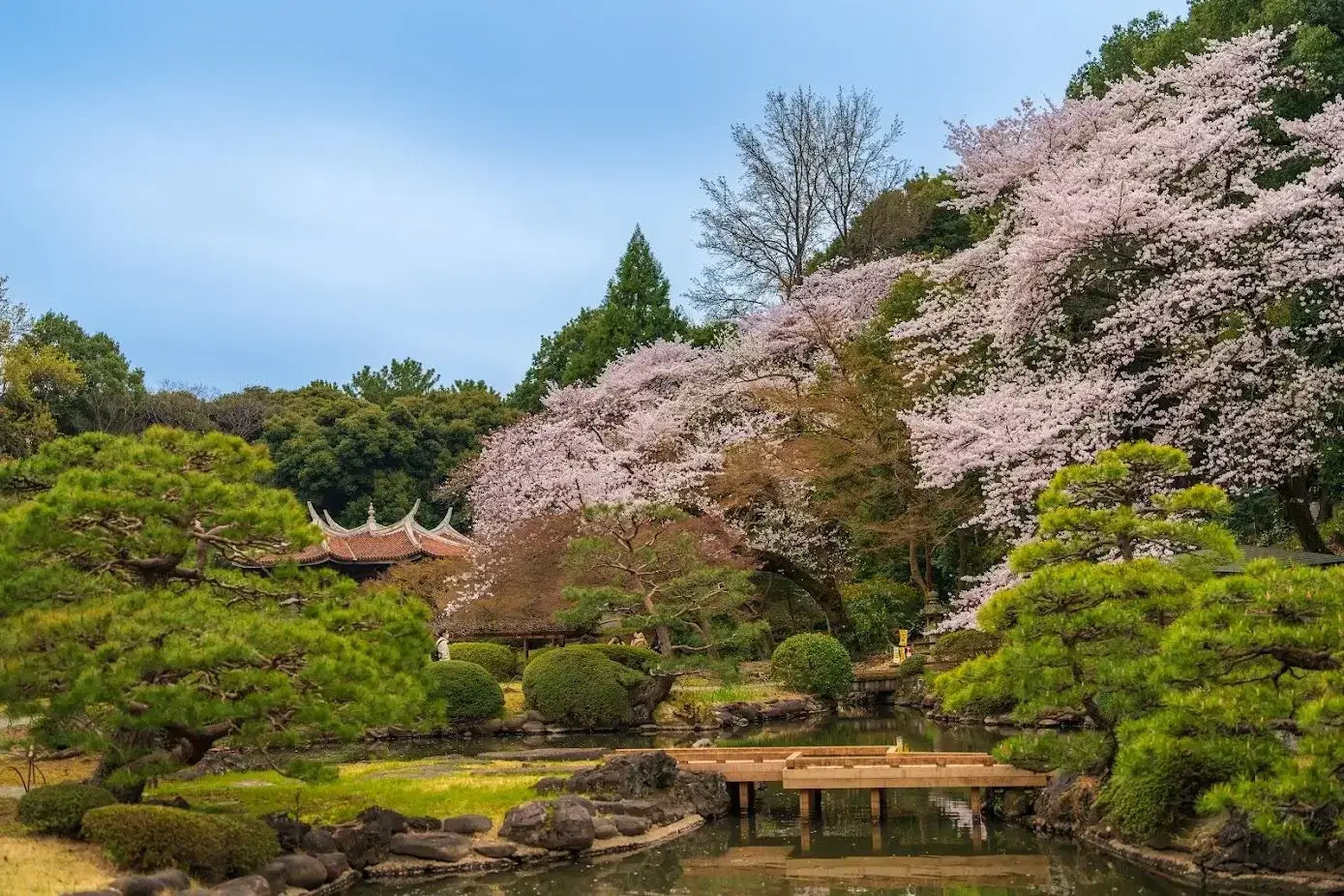
Nestled within the bustling district of Shinjuku, the Shinjuku Gyoen National Garden emerges as a beacon of tranquility.
Once you step through its gates, the noise of the city seems to fade, replaced by the harmonious sounds of nature.
At first glance, what captures the visitor’s attention is its unique blend of gardening styles.
As you stroll along the pathways, the traditional Japanese garden seamlessly transitions into an English landscape. And just when you think you’ve seen it all, the symmetry and formality of a French garden unfold before you.
But it’s not just this fusion of styles that makes Shinjuku Gyoen special. Every spring, throngs of visitors and locals alike converge here, all eager to witness the park’s iconic cherry blossoms.
Drenched in soft pinks and whites, the garden transforms into a picturesque haven, further solidifying its reputation as one of Tokyo’s prime cherry blossom viewing spots.
More info ➜ The 15 Best Things to Do in Shinjuku
Rikugien Garden
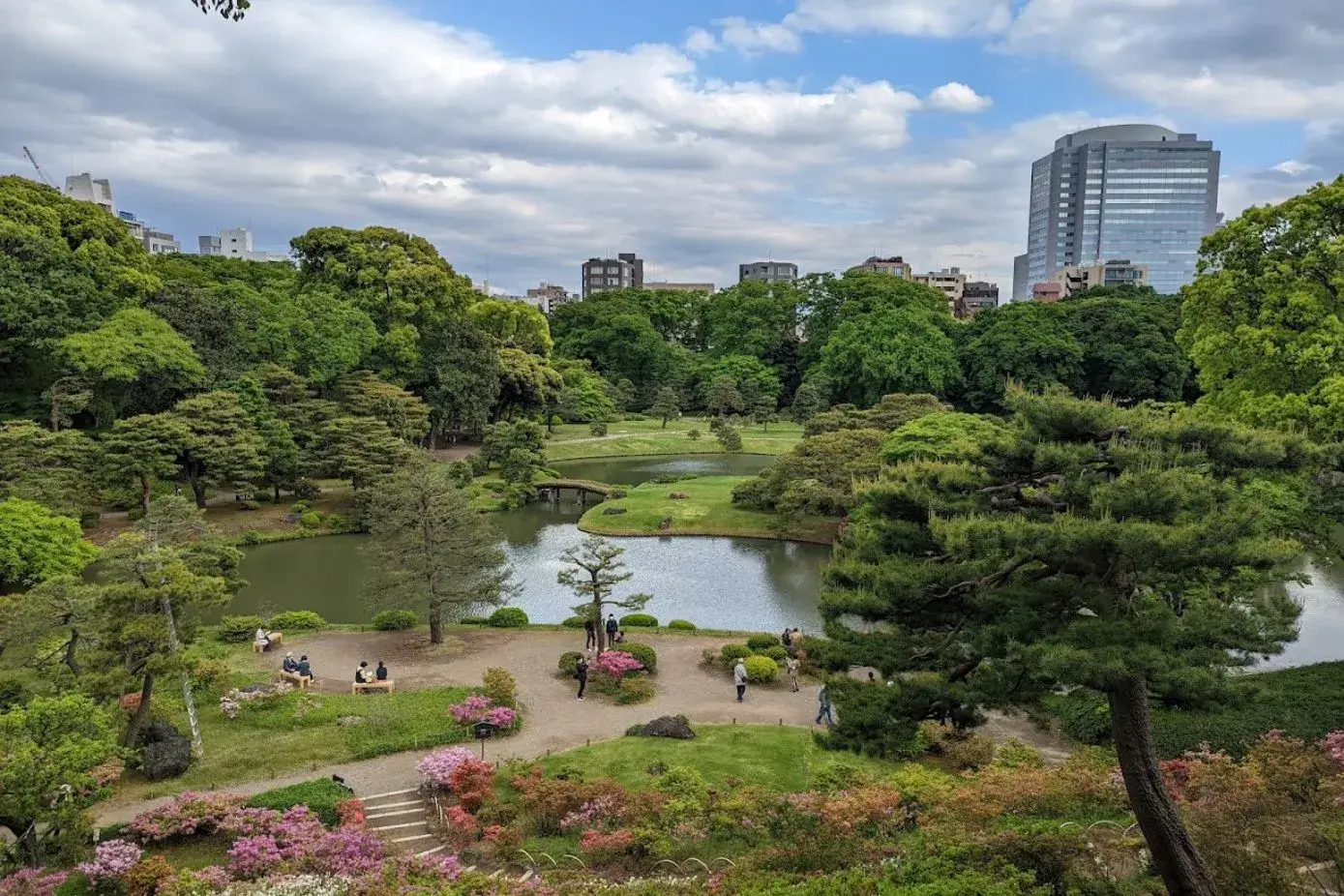
Tucked away in the city’s landscape, Rikugien Garden tells a story as rich as the tapestry of plants and waterscapes within it.
Designed with inspiration from classical Japanese literature, every corner of the garden feels like a poetic verse brought to life.
Visitors often find themselves captivated by its meticulous design, which echoes the beauty and intricacies of traditional Japanese poems.
But Rikugien isn’t just about its literary underpinnings. As seasons change, so does the garden’s persona.
In spring, delicate cherry blossoms paint the garden in soft hues, drawing nature enthusiasts and photographers.
Meanwhile, autumn transforms Rikugien into a canvas of fiery reds and oranges, with the foliage setting the garden alight with its vibrant colors.
Venturing through its paths, one cannot help but admire the garden’s ability to evoke emotions and transport visitors to ancient Japan.
Furthermore, Rikugien stands as a testament to Tokyo’s dedication to preserving its cultural and natural heritage amidst rapid urbanization.
Hama-rikyu Gardens
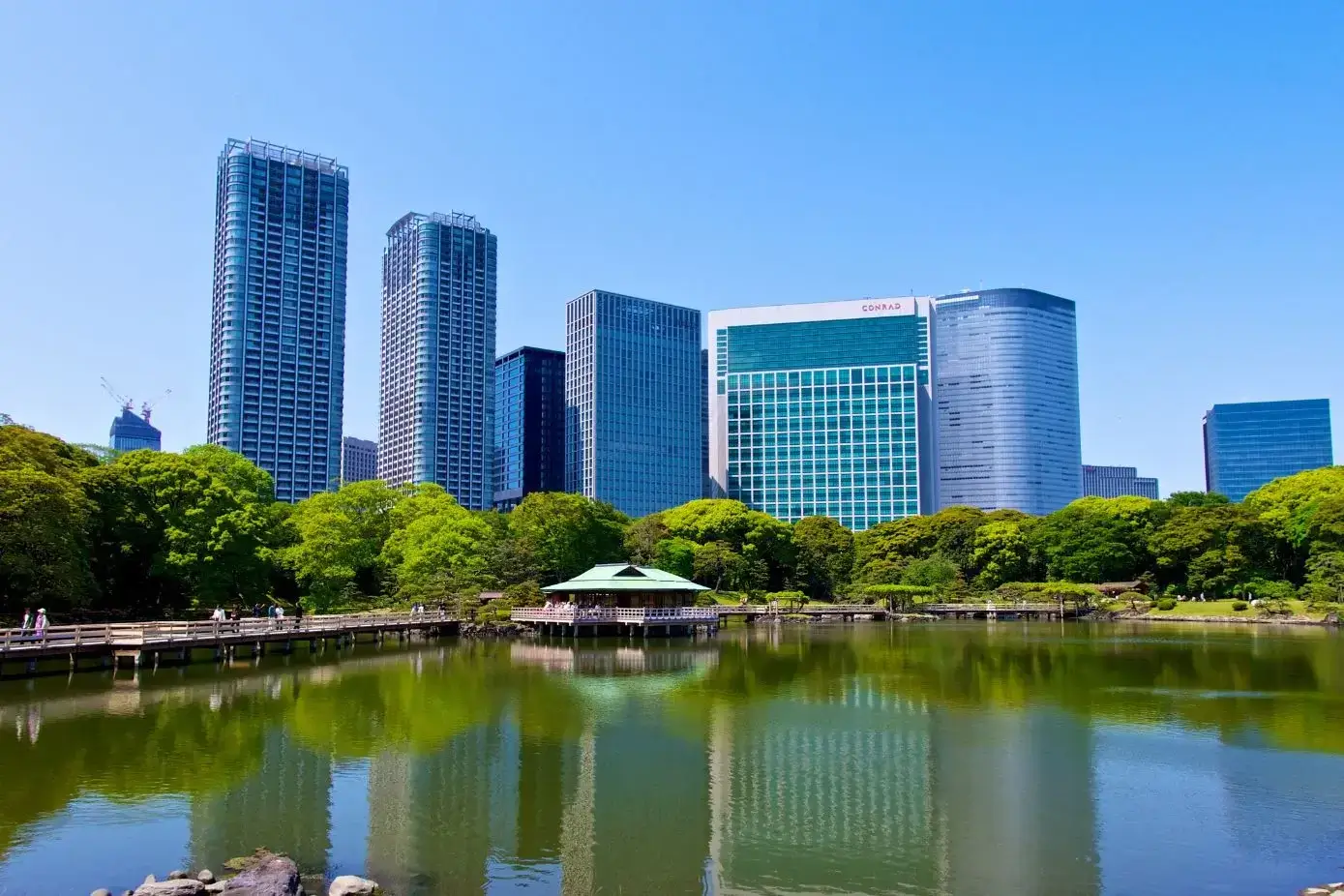
Perched on the edge of Tokyo Bay, Hama-rikyu Gardens offers a mesmerizing blend of nature and history against a backdrop of shimmering waters and modern skyscrapers.
As you enter, the tidal pond immediately grabs your attention. Ingeniously designed, this pond changes its face with the ebb and flow of the sea, reflecting a dance between nature and the man-made environment.
Yet, it’s not just the waters that weave magic here. As you traverse the garden, the centuries-old teahouse emerges as a haven for rest and reflection.
Here, visitors can indulge in traditional tea ceremonies, further immersing themselves in the rich cultural tapestry of Japan.
But perhaps the most striking feature of Hama-rikyu Gardens is its juxtaposition.
On one hand, it cherishes its age-old traditions, from the meticulously manicured bonsai trees to the historic bird hunting grounds.
On the other, it stands proudly against Tokyo’s modern skyline, creating a visual symphony that resonates with the city’s ethos of blending the old with the new.
Koishikawa Korakuen Garden
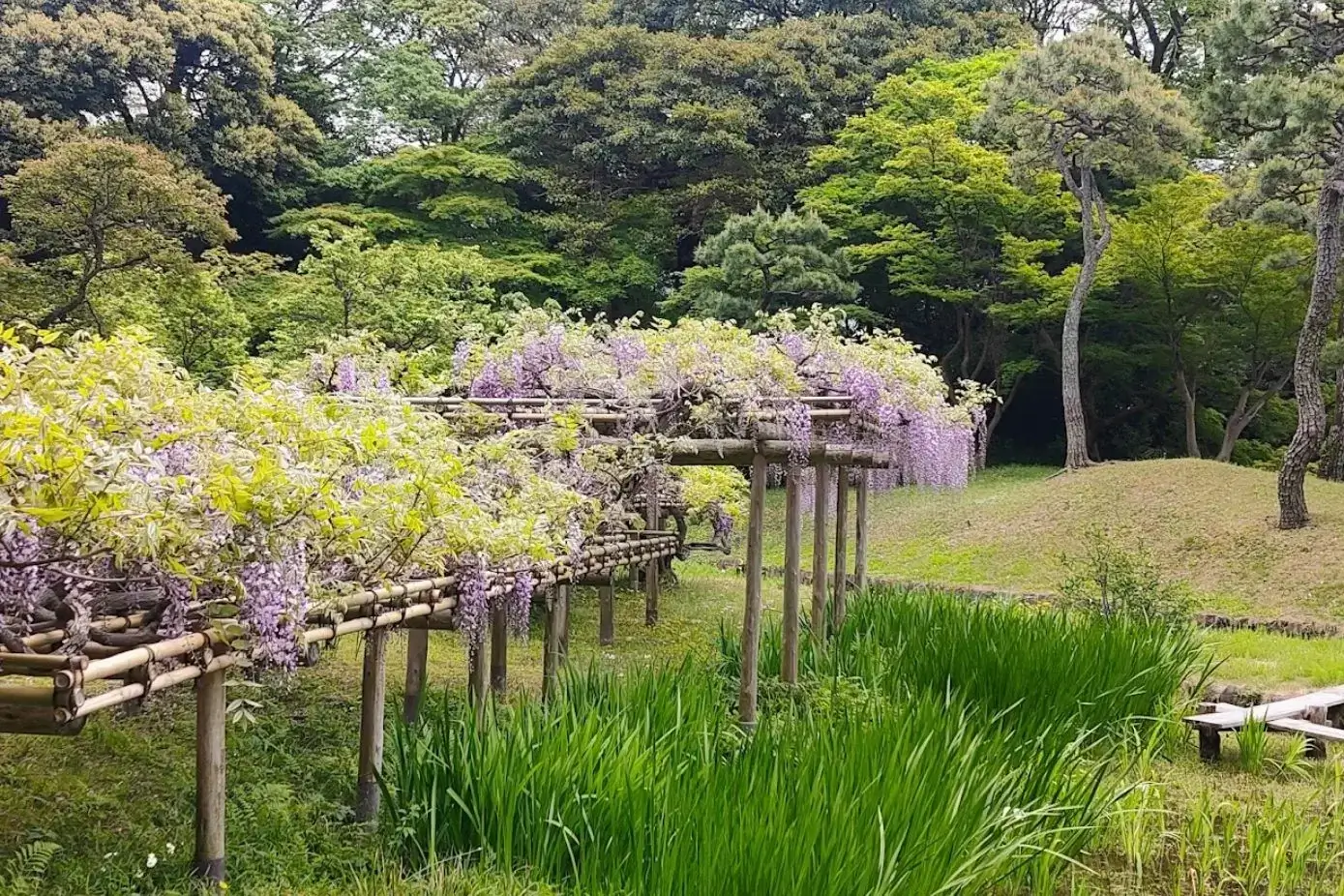
Situated in the heart of the city, Koishikawa Korakuen Garden immediately transports visitors to a bygone era.
As you meander through its pathways, you’re greeted by an elegant fusion of Japanese and Chinese landscaping concepts.
Bridges arch gracefully over serene ponds, guiding the way to enchanting nooks and crannies. The garden’s distinctive rice field, an uncommon sight in such urban settings, adds to its allure.
But Koishikawa Korakuen’s magic lies not just in its design but also in its seasonal transformations.
Cherry blossoms herald the spring with their ethereal beauty, while autumn cloaks the garden in fiery shades of red and gold.
With every visit, Koishikawa Korakuen serves as a reminder of Tokyo’s rich heritage and its commitment to preserving pockets of nature amidst urban sprawl.
It stands as a testament to the city’s balance of history, beauty, and modernity.
Ueno Park
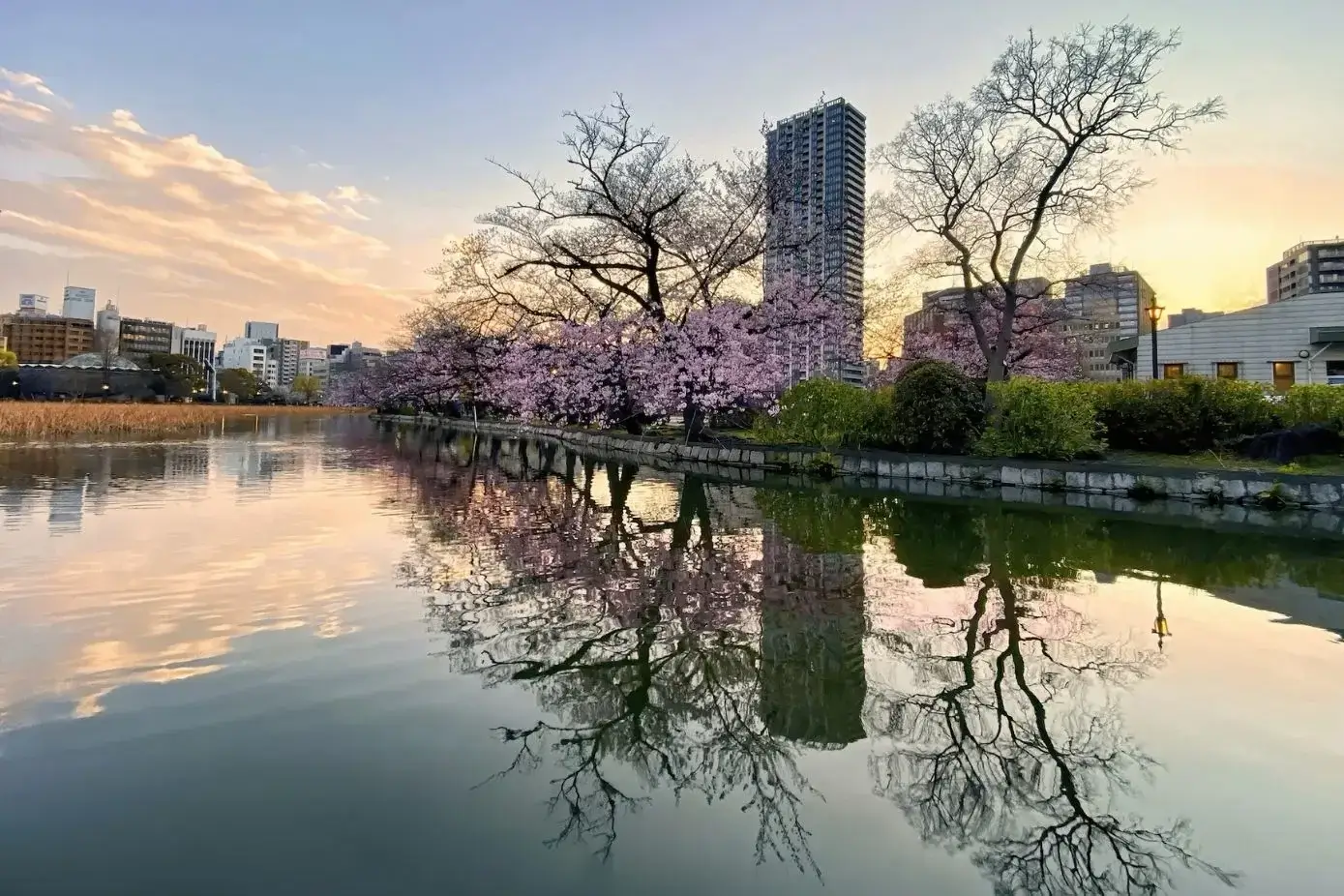
Dwarfed by none, Ueno Park stands as a multifaceted gem in Tokyo’s urban landscape.
Unlike typical gardens, Ueno goes beyond just flora and ponds. As you step in, a myriad of attractions await, from historic temples and shrines to the bustling Ueno Zoo, showcasing the park’s diverse offerings.
But the real spectacle unfolds during spring. Crowds gather, picnic mats spread out, and the entire park bursts into a riot of pink as cherry blossoms take center stage.
This annual phenomenon transforms Ueno into Tokyo’s go-to spot for hanami, the cherished tradition of flower viewing.
More than just a green space, Ueno Park acts as a cultural hub, housing several museums that dive deep into Japan’s rich history and arts.
More info ➜ The 15 Best Things to Do in Ueno
Kyū Shiba Rikyū Garden
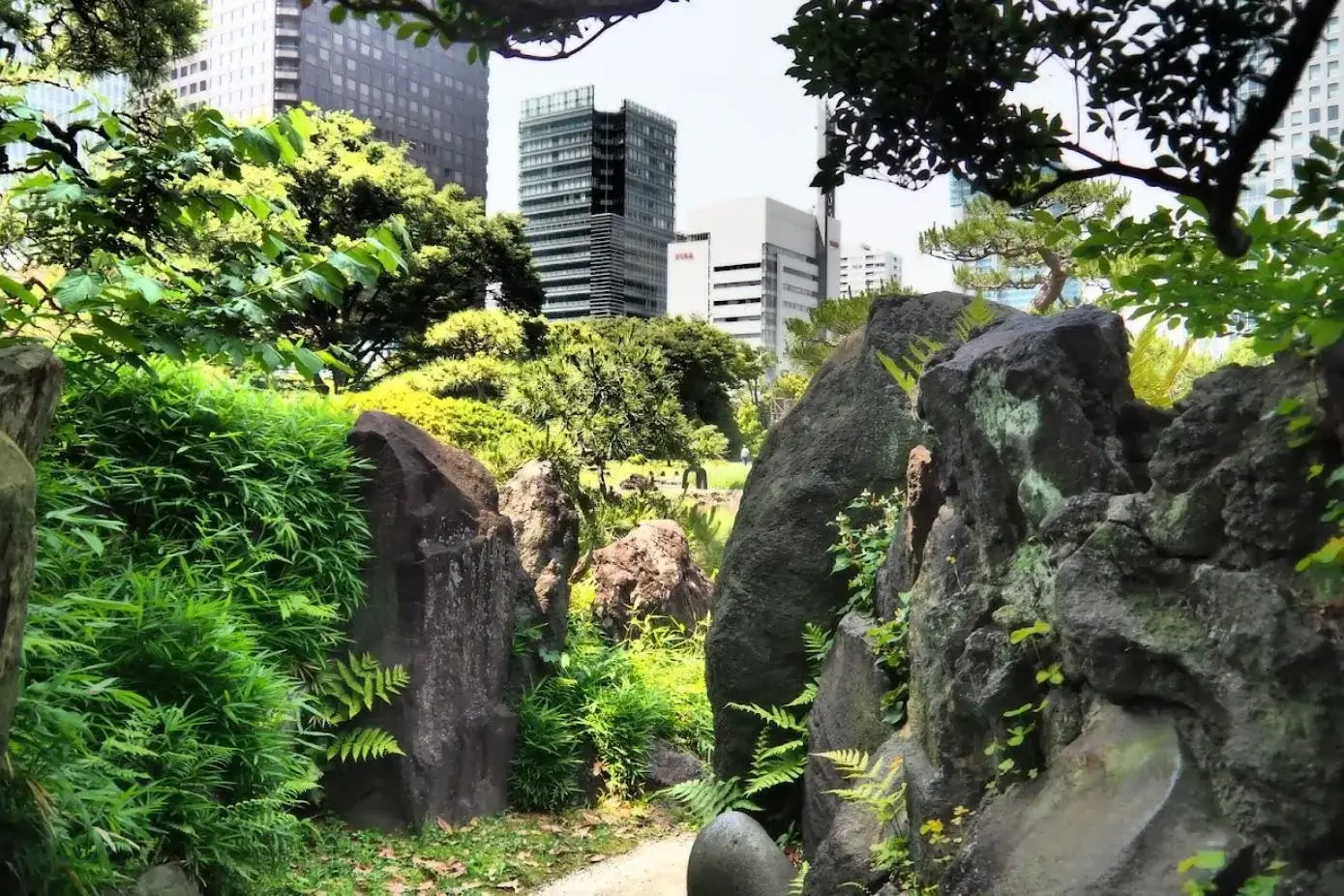
Nestled amidst Tokyo’s modern infrastructure, Kyū Shiba Rikyū Garden offers a refreshing plunge into classical Japanese aesthetics.
As you navigate its grounds, the central pond becomes a focal point, with carefully designed pathways and stone bridges inviting exploration.
Distinct from many urban gardens, Kyū Shiba Rikyū boasts intricate stone formations that not only elevate its beauty but also resonate with Japan’s natural landscapes.
These formations, juxtaposed against the urban skyline, highlight the garden’s essence: a harmonious blend of tradition and modernity.
With every turn and every season, Kyū Shiba Rikyū beckons visitors to experience a slice of historical Japan, even amid the city’s ever-evolving pulse.
Nezu Museum Garden
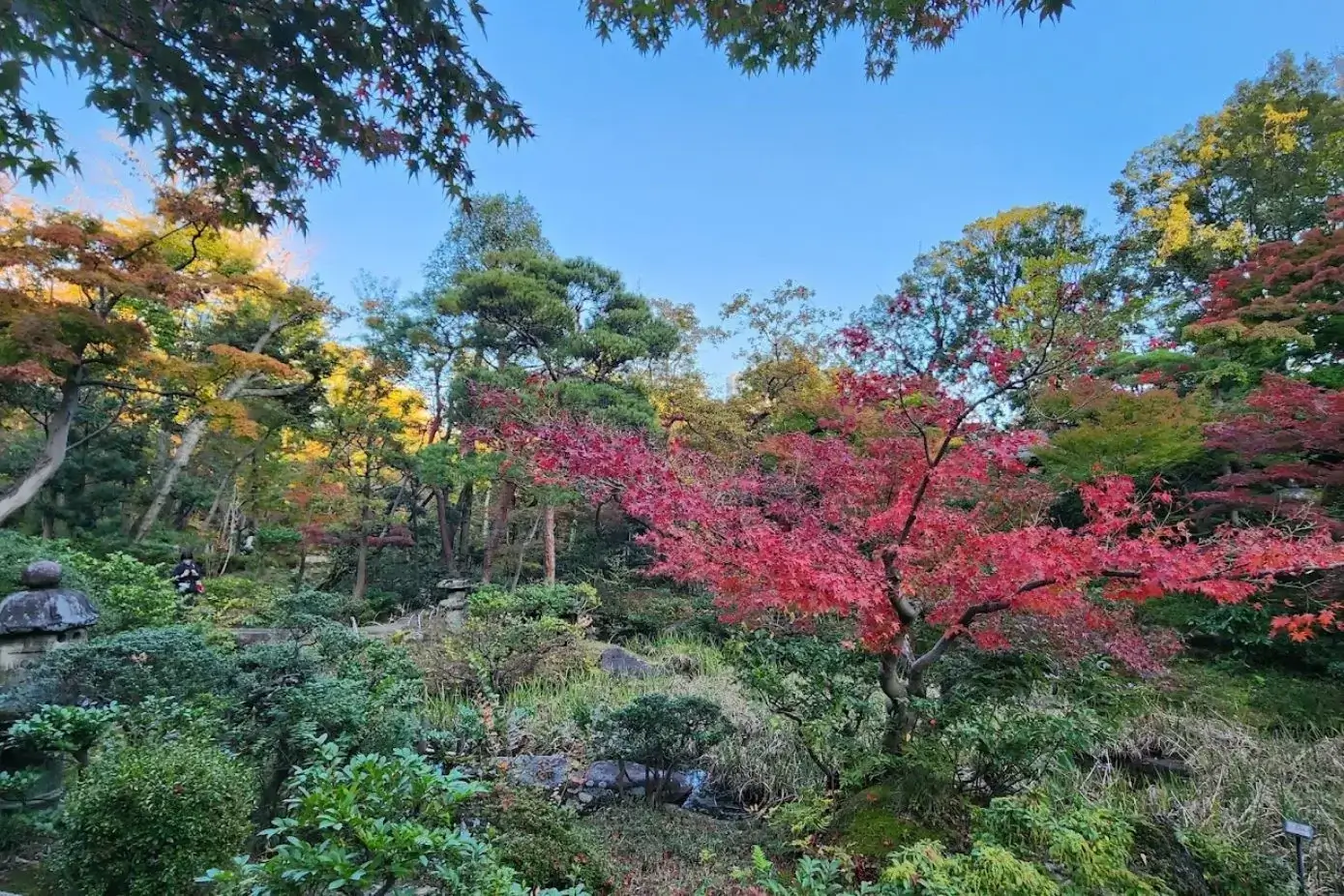
Adjacent to the renowned Nezu Museum, the Nezu Museum Garden is more than just an extension of the museum—it’s a masterpiece in its own right.
As you venture deeper into its confines, stone lanterns punctuate the landscape, leading the way to serene ponds and an enchanting bamboo grove.
Designed by the legendary landscape architect Jihei Ogawa, the garden effortlessly marries its natural beauty with the museum’s architectural prowess.
This union creates a space where art and nature coalesce, offering visitors a multisensory experience.
From the carefully pruned bushes to the tranquil water features, every element in the Nezu Museum Garden feels curated, echoing the museum’s commitment to art and aesthetics.
Imperial Palace East Gardens
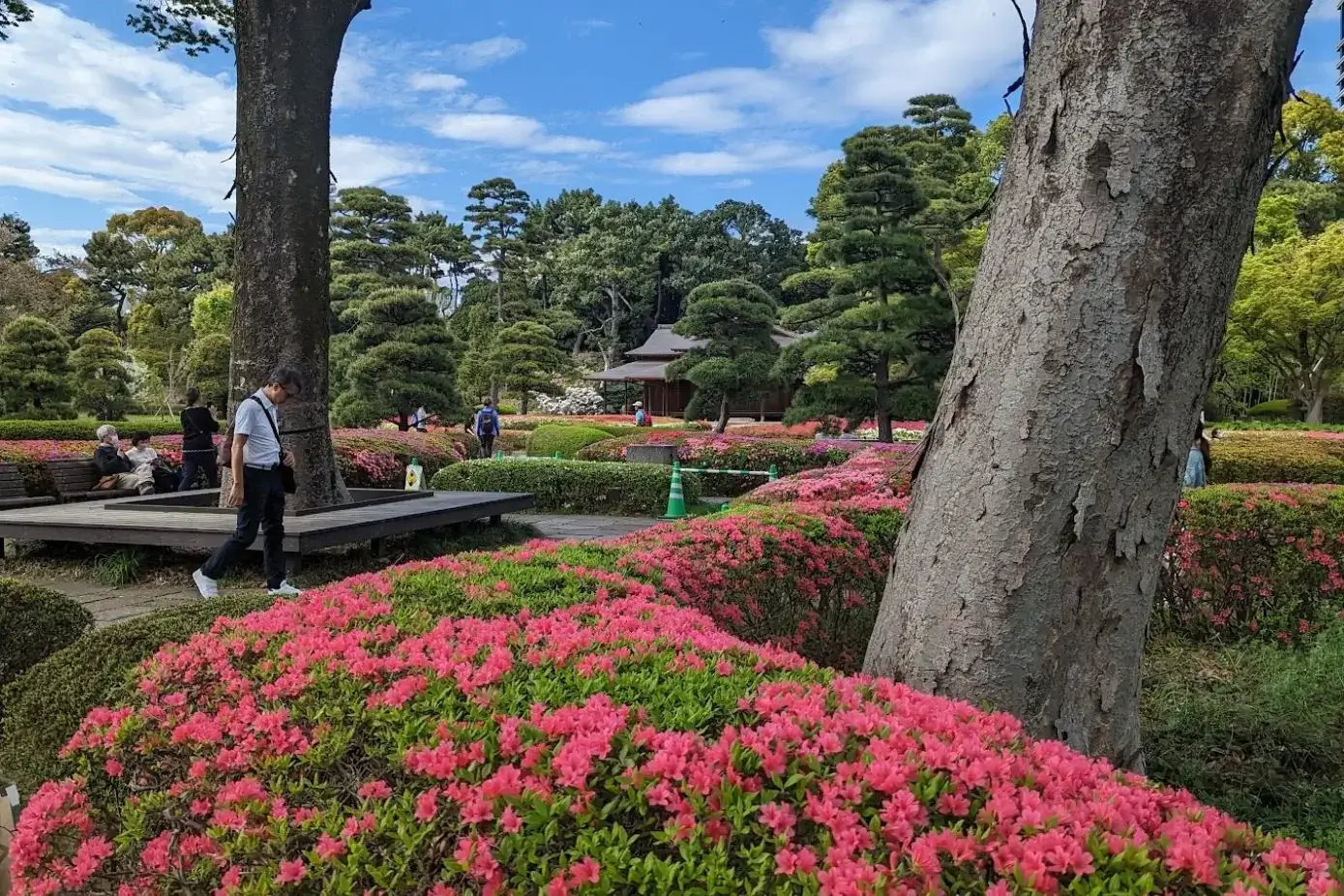
Anchored in the heart of Tokyo, the Imperial Palace East Gardens stand as living remnants of the city’s regal past.
Within its vast expanse, the gardens encapsulate the legacy of the historic Edo Castle. As you tread its pathways, the old castle tower and fortifications rise as silent witnesses to bygone eras.
Yet, beyond its historical touchpoints, the gardens captivate with their diverse flora. Seasonal flowers bloom in orchestrated symphony, painting vivid panoramas across the landscape.
Each section of the garden offers distinct experiences, from the meticulously manicured lawns to the tranquil koi-filled ponds.
Although the Imperial Palace itself remains a restricted zone, the East Gardens generously open their gates to the public.
Final Thoughts
In the vibrant tapestry of Tokyo, gardens emerge as timeless sanctuaries, bridging the past with the present.
Through our journey across these eight gardens, we’ve witnessed Tokyo’s deep-rooted reverence for nature and its seamless fusion of history and modernity.
From the serene pockets of Koishikawa Korakuen to the vast expanses of Ueno Park, each garden unfolds its unique story, reminding us of the city’s diverse character.
As the urban hustle continues around them, these gardens stand as peaceful retreats, beckoning locals and visitors alike.
In a city that never sleeps, these green oases offer solace, reflection, and a connection to Tokyo’s soul.
Whether you’re a first-time visitor or a lifelong resident, these gardens are more than just scenic spots—they’re the heartbeat of a city that cherishes its roots while embracing the future.
If you are wondering what to do in Tokyo, check this article below!
FAQ
Shinjuku Gyoen National Garden is among the largest and most popular gardens in Tokyo, offering a blend of various garden styles.
Shinjuku Gyoen and Ueno Park are renowned for their breathtaking cherry blossom displays during spring.
The Imperial Palace East Gardens and Hama-rikyu Gardens are centrally located and easily accessible from Tokyo’s main districts.
Rikugien and Koishikawa Korakuen are classic examples of traditional Japanese landscaping, providing an authentic experience of Japan’s gardening heritage.
While some gardens like Ueno Park are free, others like Shinjuku Gyoen and Hama-rikyu Gardens have entrance fees. Prices can vary, so it’s best to check the respective garden’s official website for current rates.

